OPTIMAL DESIGN OF A THERMOVACUUM CHAMBER FOR GROUND TESTS OF ORBITAL SATELLITES
Problem. Modern orbiting satellite (fig. 1a) for various purposes must be tested on the ground before being launched into space. Such tests are carried out in simulators of space conditions – the so-called thermal vacuum chambers (TVC) using simulation of low temperature space conditions (using nitrogen), solar and infrared radiation at various satellite positions (fig. 1b). To meet these conditions, there is a need for optimal design of various types of structures and sizes of thermal vacuum chambers.
Suggestion for solving the problem. Optimization of TVC designs is carried out using modern computer technologies (in particular, CFD models) of a detailed three-dimensional analysis of thermal-hydraulic processes in TVC (c) taking into account the optimal choice of diameters and number of cooling channels (d) and temperature unevenness on the walls of TVC (d, f). As a result of the calculations, the following were determined: the total weight of the optimal TVC design; optimal functional diagram of the main and auxiliary equipment (Fig. 2) for liquid and gaseous nitrogen; parameters for choosing a cryogenic cylinder and shut-off and control valves; safety regulations; manual; regulations for the preparation, organization and procedure for conducting experiments during the operation of the TVC.
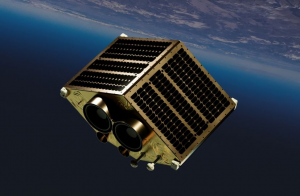 |
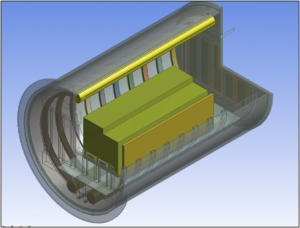 |
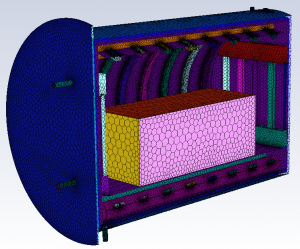 |
| a | b | c |
 |
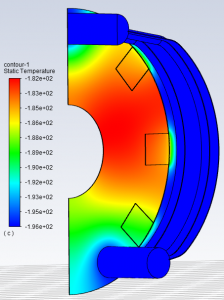 |
| d | f |
Fig. 1. Satellite (а), (b) – TVC geometric model; CFD model: c) – grid model; (d) – simulation of the temperature regime of the heat exchange element of the nitrogen cryogenic screen; f) – modeling of the temperature regime of the door of the nitrogen cryogenic screen
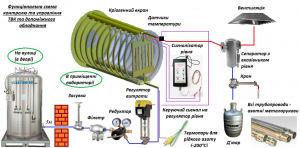 |
| Fig. 2. Schematic functional diagram and auxiliary equipment for the control and management of TVC |
The novelty and commercial proposal lies in the use of CFD technologies in the design and construction of a space conditions simulator (TVC), which allows you to calculate and select the optimal parameters of the TVC components and simulate operating modes when testing an orbiting satellite.
The work was done for the foreign company “EOS Ukraine” (Foreign Company EOS UKRAINE), the ultimate beneficial owner of which is Maxim Polyakov – an international entrepreneur in the fields of space technology and IT, investor, economist and philanthropist (https://maxpolyakov.com).
